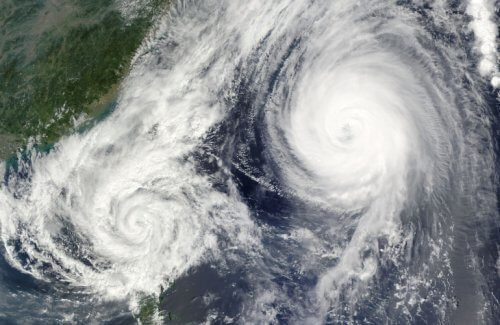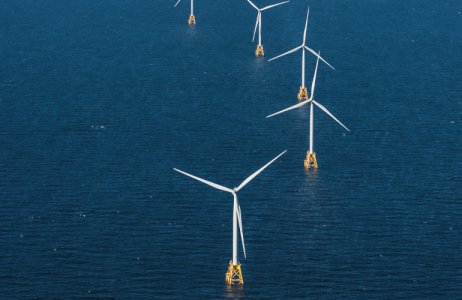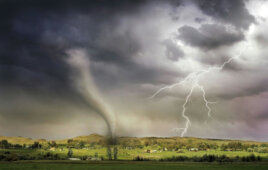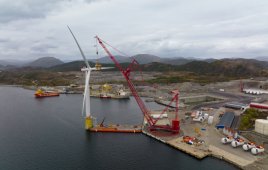In 2023, the offshore wind insurance market will support over 5 GW of offshore wind construction along the U.S. East Coast. Considering the existing development pipeline in the United States, this number is expected to grow to approximately 50 GW within 10 years. While considered an emerging sector in North America by many, the reality for many insurers is that this is a well-established industry they’ve been supporting for over 30 years – albeit the entire project in 1991 was 11 MW using 450-kW turbines. The insurance market has played a critical role in this growth by providing coverage to operators, contractors, finance parties and suppliers and offsetting risks from stakeholders’ balance sheets.
Traditional insurance products purchased to protect these parties predominantly cover three key areas:
- Property damage to the wind farm,
- Revenue loss at the wind farm resulting from property damage and
- Liability associated with third-party property damage, death and/or bodily injury during the construction or operation of wind farms.
The insurance market providing these coverages is extensive, with the appetite of over 50 insurers to provide capacity. Over the last 10 years, these insurers have paid substantial claims associated with property damage and revenue loss to wind farms, including many where the claim value exceeded the amount received in premiums. These claims have been mainly attritional rather than large one-off losses and can be attributed to the following root causes:
Planning/execution errors: The industry’s rapid growth has led to larger equipment and vessels, operations in deeper water depths and increased distance from shore each year. As a result, it is perhaps inevitable that mistakes will be made as the industry learns. This steep learning curve is particularly evident in projects built in new locations or in countries with no prior offshore windfarm exposure, using new technologies or installation methodologies and involving new operators, contractors and suppliers.
Errors are one of the key reasons insurance is ultimately purchased, to protect those parties against the losses associated with such mistakes. However, insurers will not accept corner cutting, lack of due diligence and weak quality assurance/quality control. To keep insurers engaged, the industry must demonstrate that lessons are learned from each instance of negligence, and steps are taken to prevent recurrence. In some cases, this has happened. In other cases, “learning” has taken longer, like with cable installation, and insurers have had to take definitive actions to address claims being made, by increasing deductibles, implementing stricter marine warranty surveyor protocols or limiting coverage in specific areas or for specific perils.
Defects in design: Wind turbines have gotten bigger, foundations are longer and heavier, cables have lengthened and shifted to higher voltages and direct current circuits, and offshore substations have reached the size of football stadiums. With this evolution, there have been examples of the technology containing defects in design. These defects range from series-wide basis (gearbox issues on a certain wind turbine model), issues impacting the entire industry (cable protection systems) or one-off defects (a specific manufacturing defect bespoke to a project). In each of these cases, insurers have played a crucial role in compensating the affected party, alongside warranty provisions provided by the supplier.
In the current challenging supply chain environment, risk allocation between the insurer, the operator and supply chain will remain difficult to agree upon. In addition, gaps may emerge if parties wish to engage with insurance advisors without significant offshore wind experience, insights and a track record of designing and placing offshore wind insurance solutions over the last 10+ years. Allocating risks to the party best able to manage them is crucial, as insurers cannot be the sole backstop for warranties or technology evolution.
Weather: Most weather-related losses in offshore wind have been caused by operating in extreme offshore conditions, such as a vessel caught in a difficult sea state during cable installation. However, the biggest concern for insurers as offshore wind goes into new territories across Asia and the United States is the projects’ exposure to natural catastrophes such as hurricanes and earthquakes. While the industry hasn’t experienced significant natural catastrophe losses to date, the data shows that weather patterns are becoming more extreme, leading to significant losses across insurers’ broader portfolios. For example, global (re)insurer Munich Re confirmed that global H1 insured natural catastrophe losses exceeded the 10-year average of $34 billion, hitting $43 billion in 2023.
The development of typhoon class (T-Class) wind turbines is a necessary and important step, but the reality is that the data is still limited on the survivability of offshore wind farms in extreme weather-related events. Insurers face challenges due to their lack of modeling data specific to such extreme weather. For years, insurers have relied on weather models to set their limits and pricing. However, these models do not consider the specifics of offshore wind. As a result, insurers rely on onshore calibrated models, which can lead to potentially inaccurate results. Insurers need to consider their exposure at both a single offshore wind farm site, and their accumulation to a large area of offshore wind activity such as the U.S. East Coast. As their accumulation grows, their ability to deploy capacity will be reduced and the supply/demand balance will shift into more expensive natural catastrophe capacity for the industry. Understanding offshore wind’s resistance to earthquake is even less understood. Therefore, as floating fixed projects are developed in locations like California, there is a lot of work still to be done before insurers will deploy significant capacity.
Geographic risks
In addition to the industry-wide features outlined above, the U.S. offshore wind industry faces additional challenges that are inherent to a new offshore wind geography. The restrictions to vessels and crew imposed by the Jones Act require alternative installation methodologies. These alternative methods introduce additional interfaces beyond the traditional scope of offshore wind farm installation (e.g., the use of feeder barges). Insurers are closely examining these activities and the implications to the overall risk profile of a project.
Limitations in the capacity of the offshore wind industry supply chain, especially regarding vessel availability, are expected to increase lead time of components and overall repair time in the event of a loss. This has an immediate impact on the insurance market’s exposure to revenue losses, and insurers are looking carefully at this exposure and trying to limit their liabilities through cover restrictions and/or increases in deductibles. Additionally, supply chain constraints would impact repair costs, with higher expenses in the United States compared to Europe (known as claims inflation). This has an impact in the total amount of medium/large losses but also in the number of smaller losses that can potentially exceed the deductible, which is driving insurers to increase deductible levels for U.S. projects. While the development of a local supply chain is welcomed as it should have a positive impact on lead times and replacement costs, this is also perceived by insurers as an increased risk due to the potential lack of experience of the workforce around the local content.
 The insurance market is very well positioned to support the emerging U.S. offshore wind industry, as it has done for many countries and developers moving into new locations, but insurers cannot be expected to assume all the risks associated with errors, defects in design and extreme weather. Along the U.S. East Coast, adapting to intensifying hurricane events is inevitable. The supply chain needs to work closely with developers and insurers to be transparent about the technologies design tolerances to such events, working closely with modeling companies and associated analysts to ensure insurers can adequately review and manage their exposure, to charge reasonable, consistent and sustainable premiums for such perils.
The insurance market is very well positioned to support the emerging U.S. offshore wind industry, as it has done for many countries and developers moving into new locations, but insurers cannot be expected to assume all the risks associated with errors, defects in design and extreme weather. Along the U.S. East Coast, adapting to intensifying hurricane events is inevitable. The supply chain needs to work closely with developers and insurers to be transparent about the technologies design tolerances to such events, working closely with modeling companies and associated analysts to ensure insurers can adequately review and manage their exposure, to charge reasonable, consistent and sustainable premiums for such perils.
If the United States and developers intend to move into locations like the Gulf of Mexico, this becomes even more acute. The current supply chain is not designed to robustly survive hurricanes, which frequent the Gulf of Mexico each year at Category 4 and Category 5. As a result, insurers will not provide capacity until facilities are designed to such wind speeds. Therefore, the key to insurance (and consequently financing) comes from the supply chain’s ability to give insurers comfort that the technology they are supplying can withstand environments like that of the Gulf of Mexico. In addition, comparison must be drawn with the oil and gas operators in the Gulf of Mexico who have self-insured the exposure of hurricanes for many years due to the cost and extremely limited capacity offered by insurers in the Gulf for these weather events. Offshore wind developers and the supply chain must proceed on the assumption that this will be the case for offshore wind as well if they do operate in this location.
When a risk is present that is so significant like natural catastrophe perils, it needs to be shared. If the offshore wind industry is to grow at the projected levels, insurers cannot be expected to hold these extreme weather risks on their own. An open and ongoing dialogue among developers, operators, supply chain and finance parties, including insurers, is necessary to find a balanced allocation of risk between the interested parties.
 Tim Halperin Smith is the Head of Renewable Energy at McGill and Partners, specializing in renewable energy asset risks throughout their lifecycle. Tim has worked exclusively within renewable energy sectors for the last 13 years, dedicated to advising developers and operators in risk identification, contract risk allocation, and the placement of suitable insurance solutions for renewable energy projects worldwide, specializing in solar, onshore and offshore wind. Tim has previously worked at Willis and Aon. He has become recognized as one of the leading insurance advisers within the offshore wind sector, having been involved in the design and placement of over 60 GW of offshore wind construction and operation across Europe, Asia and the U.S.
Tim Halperin Smith is the Head of Renewable Energy at McGill and Partners, specializing in renewable energy asset risks throughout their lifecycle. Tim has worked exclusively within renewable energy sectors for the last 13 years, dedicated to advising developers and operators in risk identification, contract risk allocation, and the placement of suitable insurance solutions for renewable energy projects worldwide, specializing in solar, onshore and offshore wind. Tim has previously worked at Willis and Aon. He has become recognized as one of the leading insurance advisers within the offshore wind sector, having been involved in the design and placement of over 60 GW of offshore wind construction and operation across Europe, Asia and the U.S.
 Joao Amaro is a Partner in the McGill and Partners’ Renewables, Power and Energy team, specializing in offshore wind. Joao has over 10 years’ experience in the insurance market, most of which has been exclusively dedicated to the renewable energy sector. With a background in civil engineering, Joao has specialized in advising offshore wind projects throughout the full scope of the project lifecycle, including risk allocation, insurance program design, and placement for construction and operational phases. During this time, Joao has gained broad knowledge and experience on fixed-bottom and floating offshore wind projects in Europe, U.S. and Asia.
Joao Amaro is a Partner in the McGill and Partners’ Renewables, Power and Energy team, specializing in offshore wind. Joao has over 10 years’ experience in the insurance market, most of which has been exclusively dedicated to the renewable energy sector. With a background in civil engineering, Joao has specialized in advising offshore wind projects throughout the full scope of the project lifecycle, including risk allocation, insurance program design, and placement for construction and operational phases. During this time, Joao has gained broad knowledge and experience on fixed-bottom and floating offshore wind projects in Europe, U.S. and Asia.
McGill and Partners is a boutique specialist (re)insurance broker focused on large clients and/or clients with complex and/or challenging needs. We believe specialty placements in today’s rapidly changing market need true expertise, deep relationships and a genuinely fresh perspective.
Filed Under: Featured





